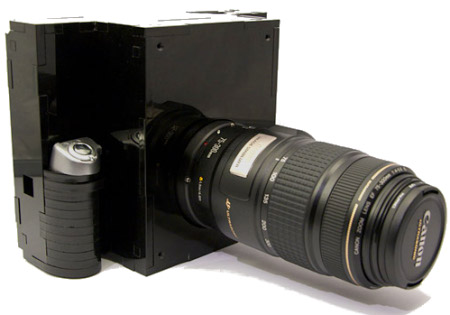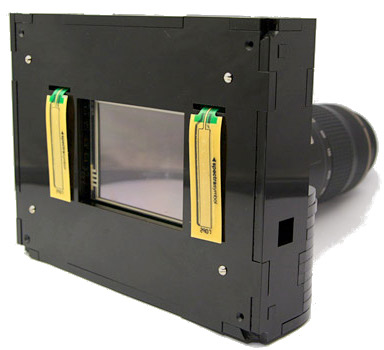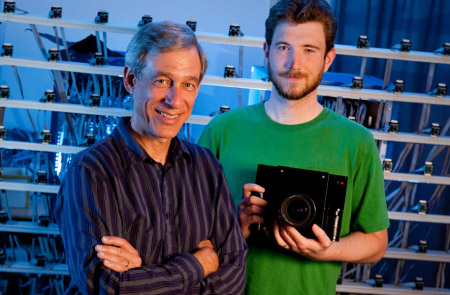Open source camera platform runs Linux
Sep 8, 2009 — by Eric Brown — from the LinuxDevices Archive — 3 viewsStanford University announced an open source digital camera with advanced computational photography capabilities. Designed as a programmable research platform and application development platform for dSLR cameras, the “Frankencamera” (formally “Stanford Camera 2.0”) runs Linux on a Texas Instruments chip and uses a Nokia N95 mobile phone camera module.
Designed by Stanford computer science professor Marc Levoy and graduate student Andrew Adams, the Frankencamera is designed to enable developers to develop and use their own algorithms to tune a camera's response to light and motion, according to a Stanford News Service article by David Orenstein. Almost every feature of the camera, including focus, exposure, shutter speed, and flash, can be programmed using an API that the researchers hope to release as open source code in about a year. Levoy plans to subsequently arrange for the camera to be manufactured for under $1,000 and offered to various photographic research projects and academic institutions.

The Stanford Camera 2.0 was dubbed Frankencamera in part due to its ugliness

Rear view of the Frankencamera
An API for future smartphone camera apps?
The Stanford Camera team also works on a number of projects about cellphone cameras, and the group envisions that the Camera 2.0 API used in the Frankencamera could eventually find its way into smartphone cameras running Linux. Advanced camera algorithms for improving image quality and integrating images with web applications could prove a key competitive advantage for open source platforms such as Android, for example.
Stanford's Marc Levoy, Andrew Adams, and the Frankencamera
(Source: Stanford University)
(Click to enlarge)
In the meantime, the technology is primarily aimed at researchers in the relatively new field of computational photography. These researchers typically use a variety of optics benches, imaging chips, and computers to develop techniques and algorithms to enhance and extend photography, according to Orenstein. The Frankencamera is seen as a way to both standardize on a basic computational photography research platform, while freeing the research to extend beyond the lab, he adds.
One key goal of computational photography research is to extend a camera's dynamic range — its ability to handle a wide range of lighting in a single frame. Dynamic range extension can be performed by capturing images of the same scene with different exposures and then combining them into a composite image "in which every pixel is optimally lit," says the story. The Frankencamera will be able to perform this trick without the assistance of tethered computers.
Another project planned for the Frankencamera is to use it to enhance video resolution by occasionally inserting high-resolution still photographs as frames. An algorithm could then recombine this image into surrounding lower-resolution video frames in order to provide a higher resolution appearance, writes Orenstein.
Automated communications with web-based services are also planned. For example, when a photographer frames a particular subject, a Camera 2.0 app might go online to analyze highly-rated pictures of the same subject, and then offer advice, or automatically revise settings, to optimize skin tone or shading.
"Some cameras have software development kits that let you hook up a camera with a USB cable and tell it to set the exposure to this, the shutter speed to that, and take a picture," Levoy was quoted as saying. "What we're talking about is, tell it what to do on the next microsecond in a metering algorithm or an autofocusing algorithm, or fire the flash, focus a little differently and then fire the flash again — things you can't program a commercial camera to do."
Availability
The Stanford Camera 2.0 "Frankencamera" and Camera 2.0 API should be available in about a year, says the project. The Stanford University News story may be found here, and the Stanford Camera project site should be here.
This article was originally published on LinuxDevices.com and has been donated to the open source community by QuinStreet Inc. Please visit LinuxToday.com for up-to-date news and articles about Linux and open source.
